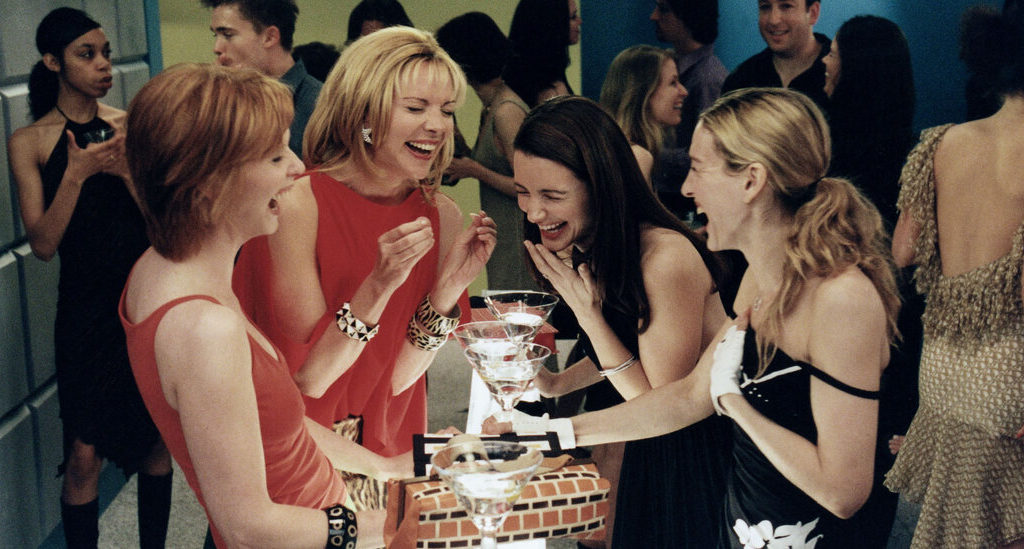Two decades ago, “Sex and the City” set the standard for many shows to come.
In the first episode of the HBO series “Girls,” Shoshanna asks her cousin Jessa to admire her “Sex and the City” poster.
There is, in fact, a well-established road map for this; it’s no coincidence that so many shows use “Sex and the City” as a reference point.
Now, nearly a decade later, 2021 has been a year of bounty, including the premieres of “Run the World,” “Harlem” and “The Sex Lives of College Girls,” and the last season of “Insecure.” We are in a new era of shows about contemporary female life that either react against or are in conversation with “Sex and the City,” broadening the depictions of race and class and freshly engaging with more of the nuances of being a woman in the world.
In the middle of this wave of new lady-gang shows, “Sex and the City” returned this month with a revival on HBO Max, “And Just Like That …,” in which Carrie .
Carrie has an Instagram! And a job on a sex podcast! Miranda must deal with her now-teenage son having sex! Charlotte has a Black friend! The series has a lot of work to do to account for all the changes the culture — and TV, in the wake of “Sex and the City” — has undergone in the last 23 years.
Not only did the series star four white women, but the number of people of color and queer women present throughout the series, even as walk-on characters, was so small that one might wonder if any lived in New York City in the ’90s.
Many of the shows that cropped up after “Sex and the City” starred casts that offered a stark contrast to the show’s overwhelmingly white, straight characters: “Girlfriends,” “Harlem,” “Insecure,” “Run the World” and “The Sex Lives of College Girls” depict friendships among more than just white women.
“Sex and the City” distinguished itself in the ’90s by being a series with recurring gay characters — Stanford Blatch — but what passed for progress then would be called out as problematic now.
For example, “The L Word,” which premiered the year “Sex and the City” ended, provided a groundbreaking depiction of queer women that TV hadn’t seen before.
Of the most recent shows in the genre, “Harlem” is one of the few to feature central queer female characters.
“And Just Like That…” tries to remedy the franchise’s earlier deficiencies by introducing friends of color , who challenge the main lady cast’s conservative notions of gender and sexuality, or, in the case of Miranda, steer them through personal breakthroughs about their own sexuality.
“Sex and the City” was surprisingly open about a woman’s right to choose in an episode when Miranda considers an abortion, but otherwise it was largely apolitical when it came to women’s health.
In the “Sex and the City” descendants with Black casts, there’s the additional challenge of discussing the medical problems more common to Black women — in “Girlfriends” and “Harlem,” for example, characters suffer from uterine fibroids.
Of the more recent shows, those with younger characters — first “Girls,” and now “The Sex Lives of College Girls” — have been the most dedicated to addressing those issues, reflecting the frequency at which younger generations are having these conversations.
At some point, most of us also have to work hard for a living, especially in New York, and in general “Sex and the City” didn’t need to drop its blinders with regard to career politics and class in order to have a successful series.
And yet, there’s still an audience for “And Just Like That …” just as there one was for “Sex and the City.” But now, for fans who want more from their fiction, there are many other options.
Carrie counters, “Well, we can’t stay who we were, right?” These formerly swank, modern women appear like museum relics dropped into a modern age.
The lady-gang genre still mostly targets youth, beginning in the late teens with shows like “Sex Lives,” and extending into women’s 20s, as “Girls” and “Girlfriends” do.
It’s because the writers have largely failed to recognize the ways women middle-aged and beyond can still be funny, sexual and relevant.
Without “Sex and the City,” we may not have all the bingeable series that we have today.
